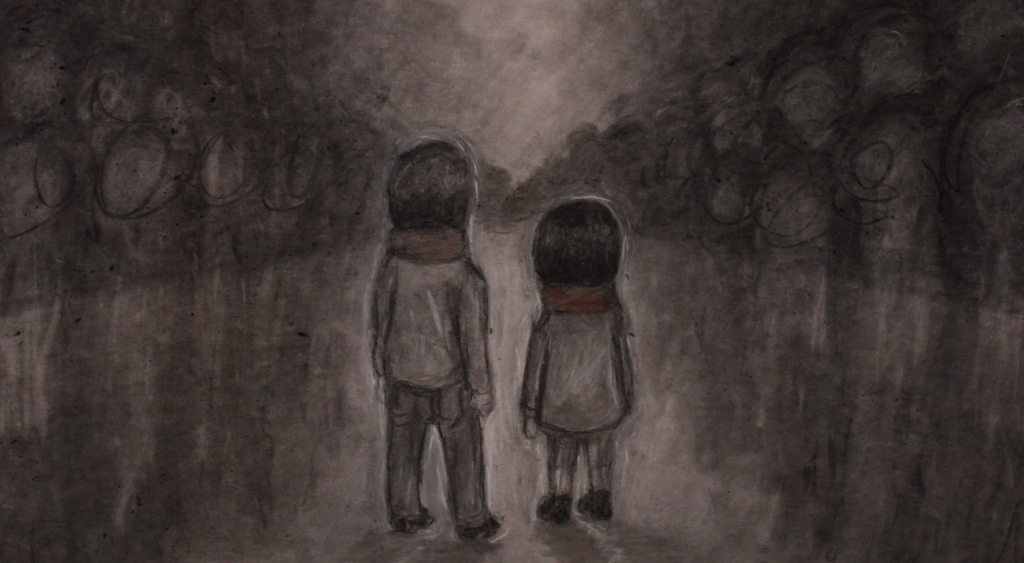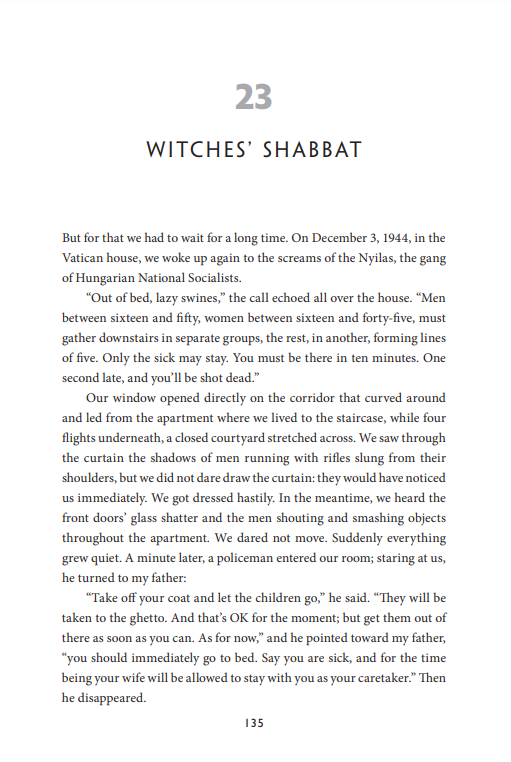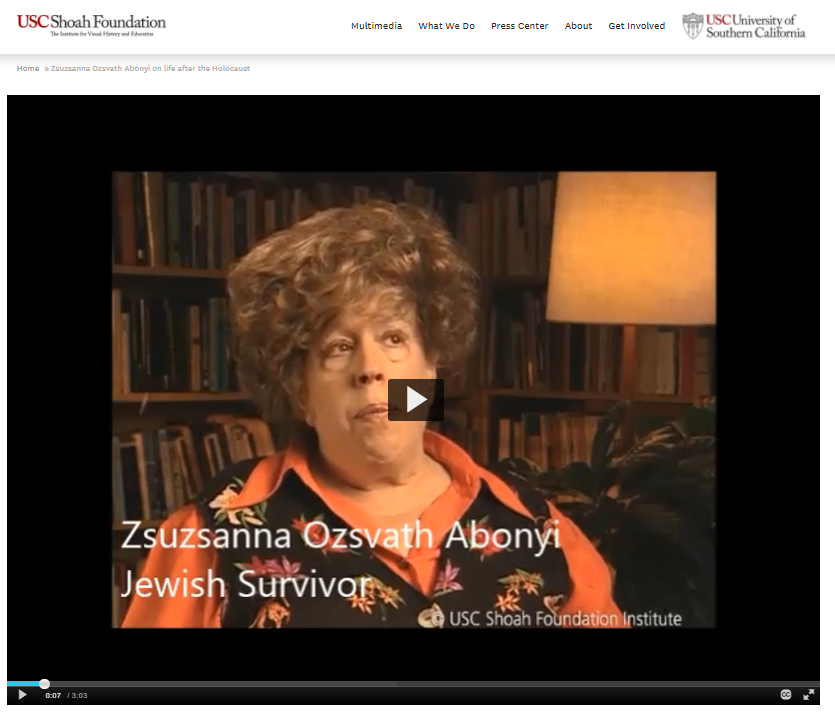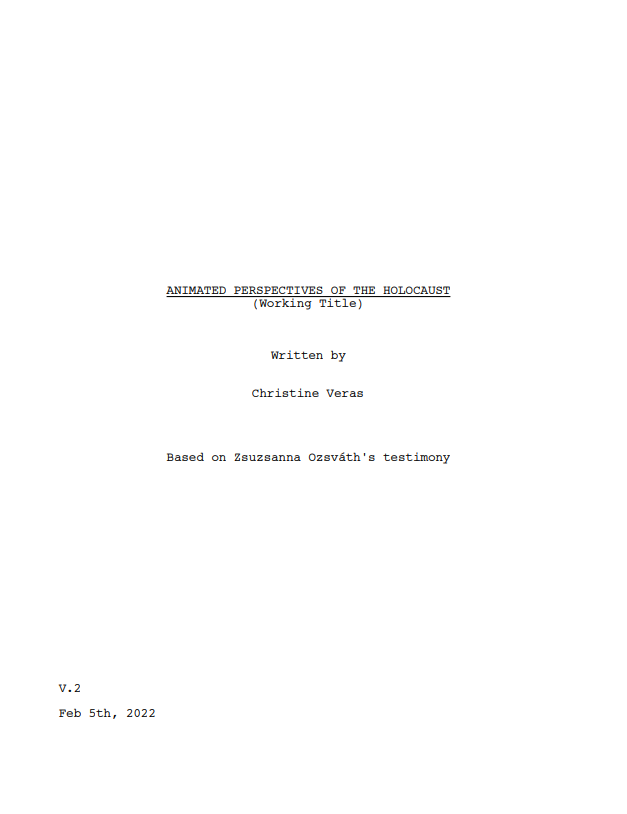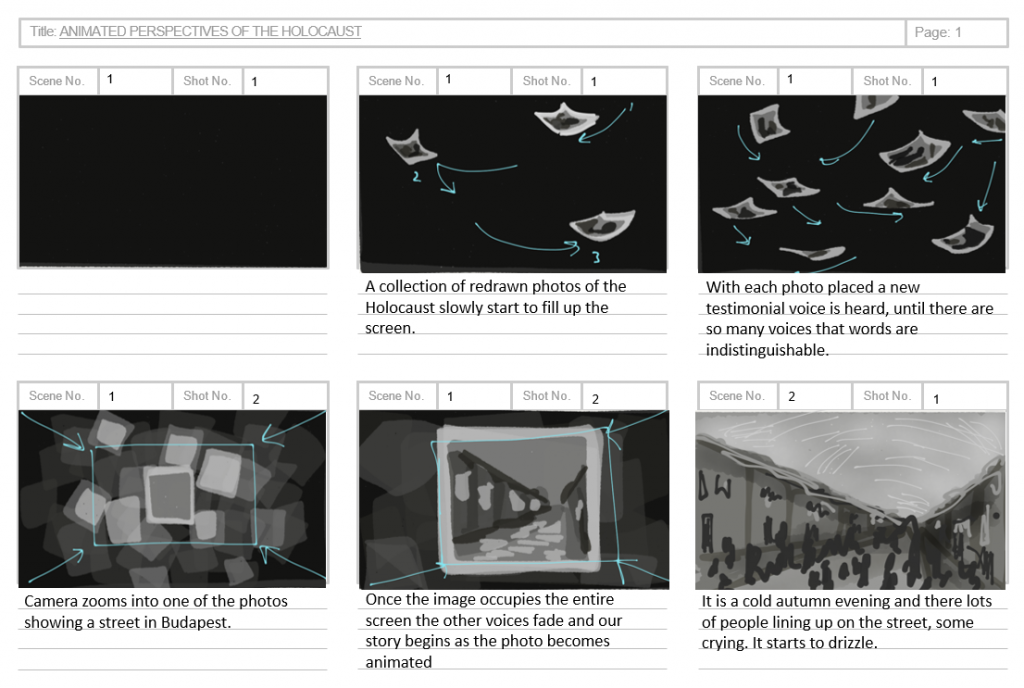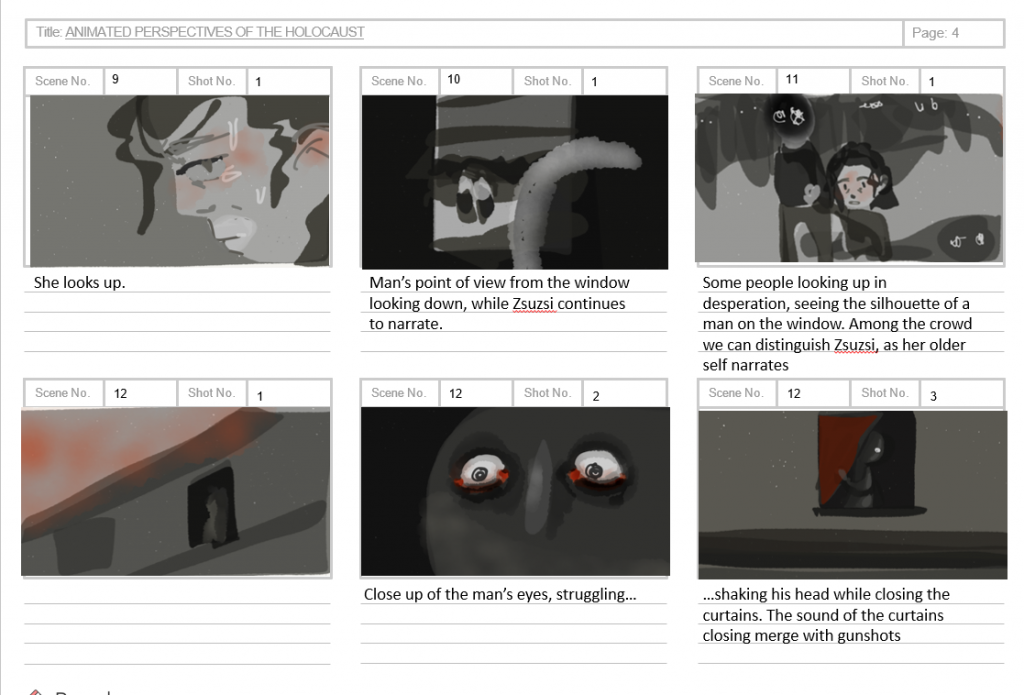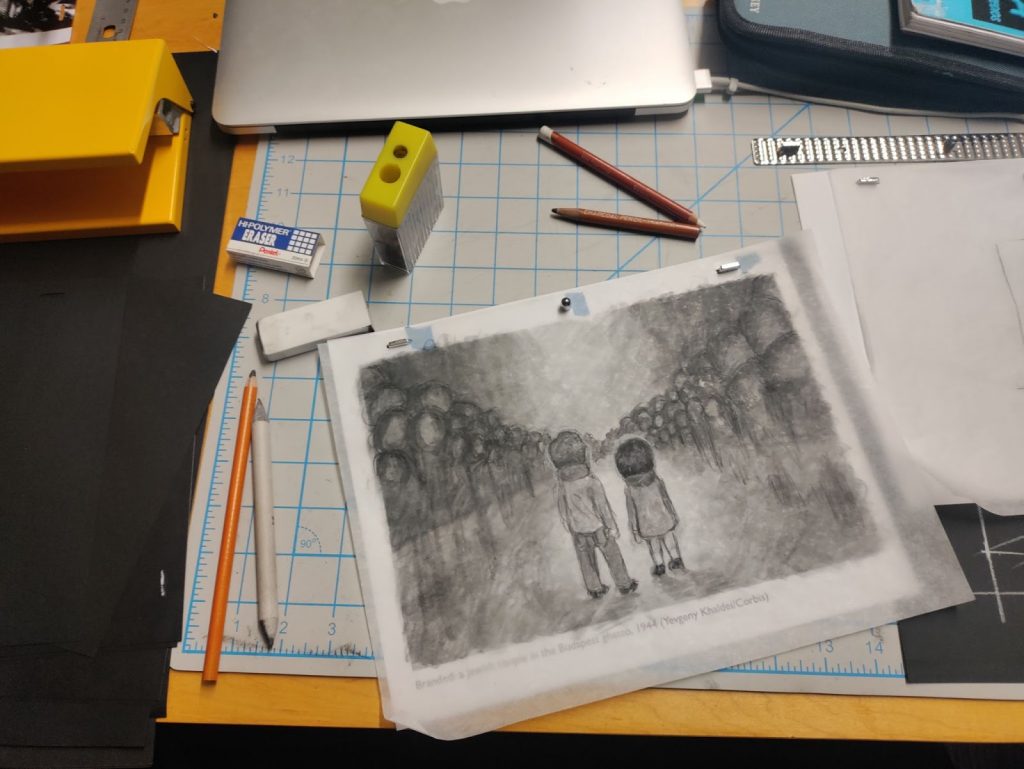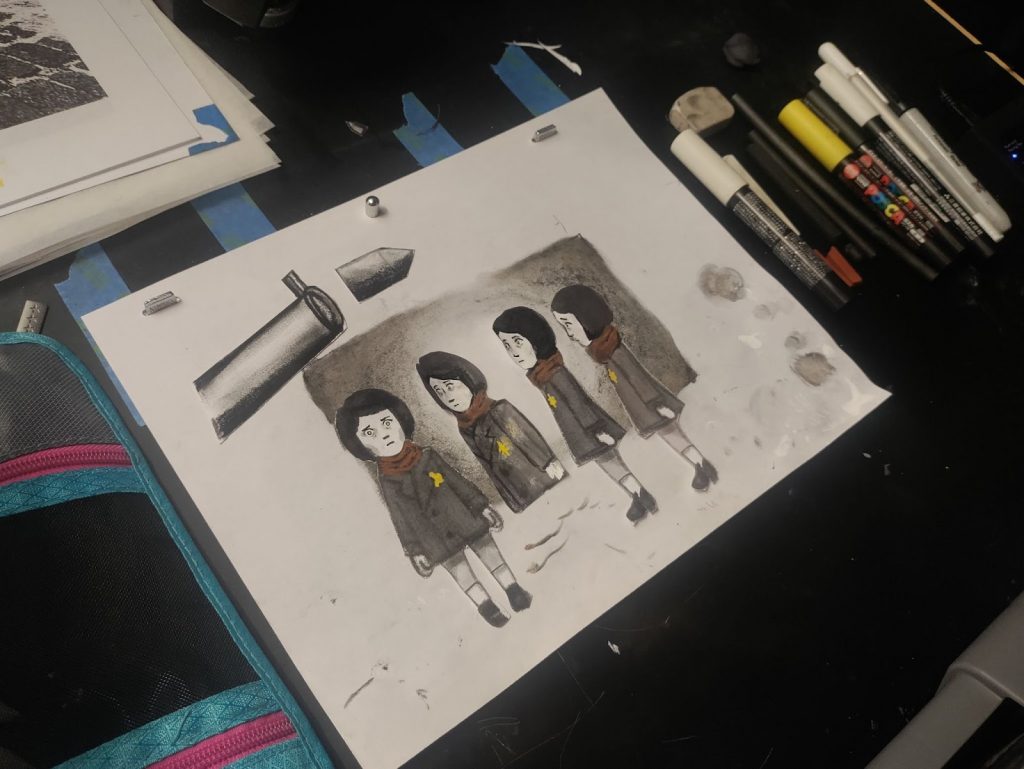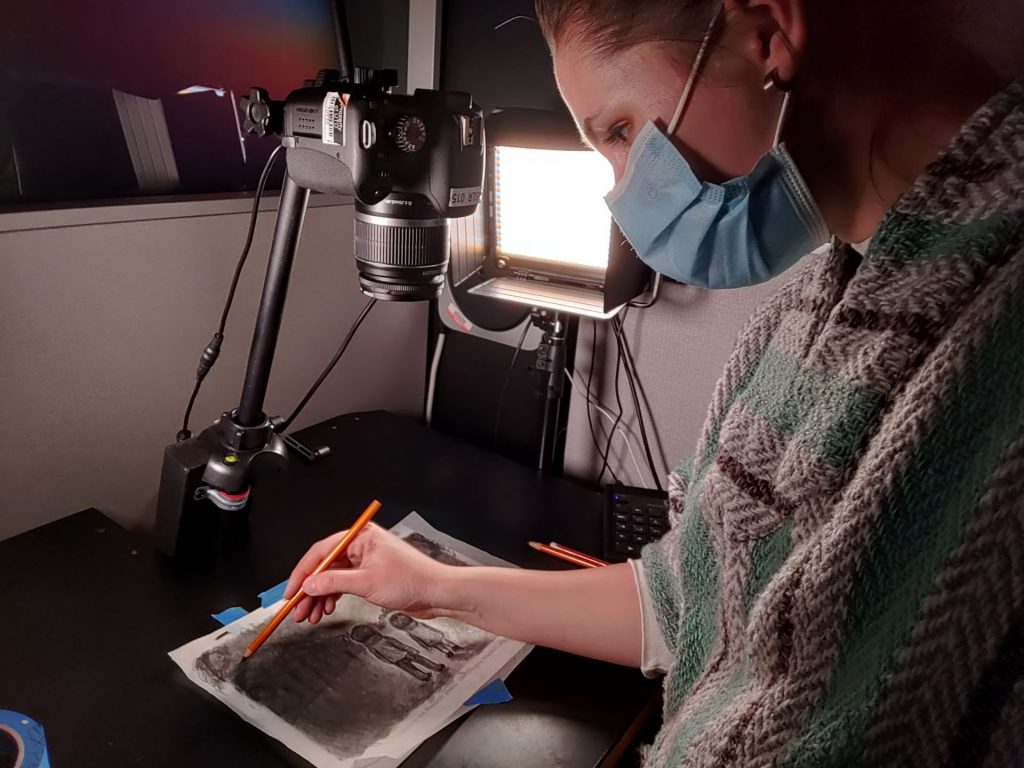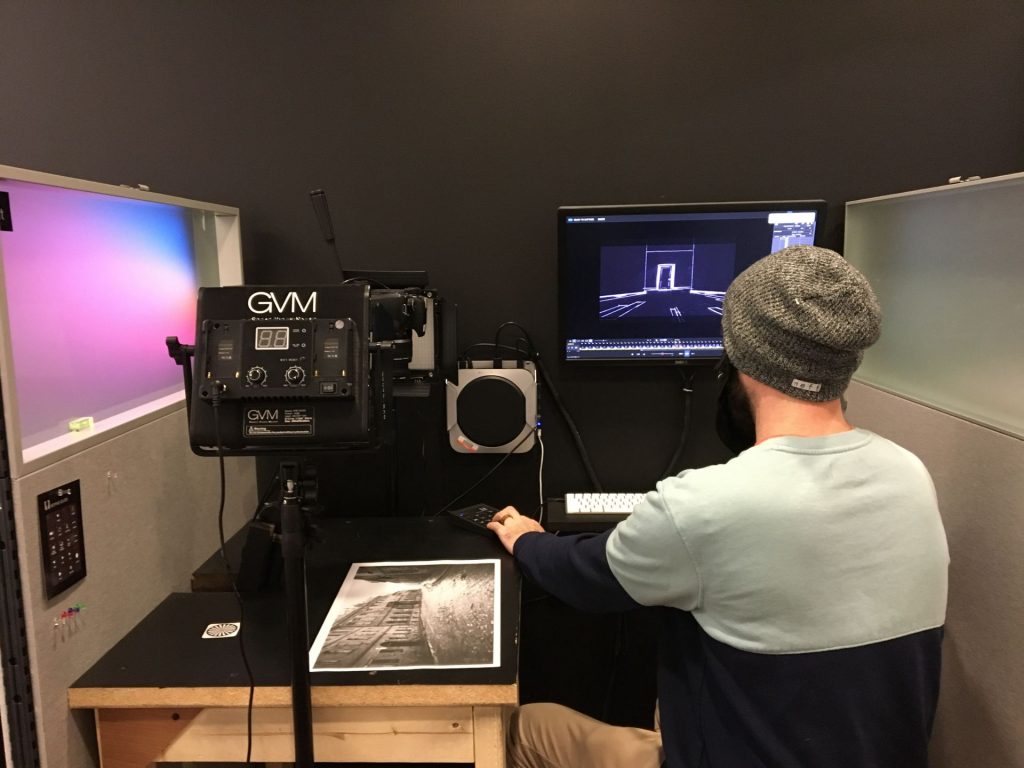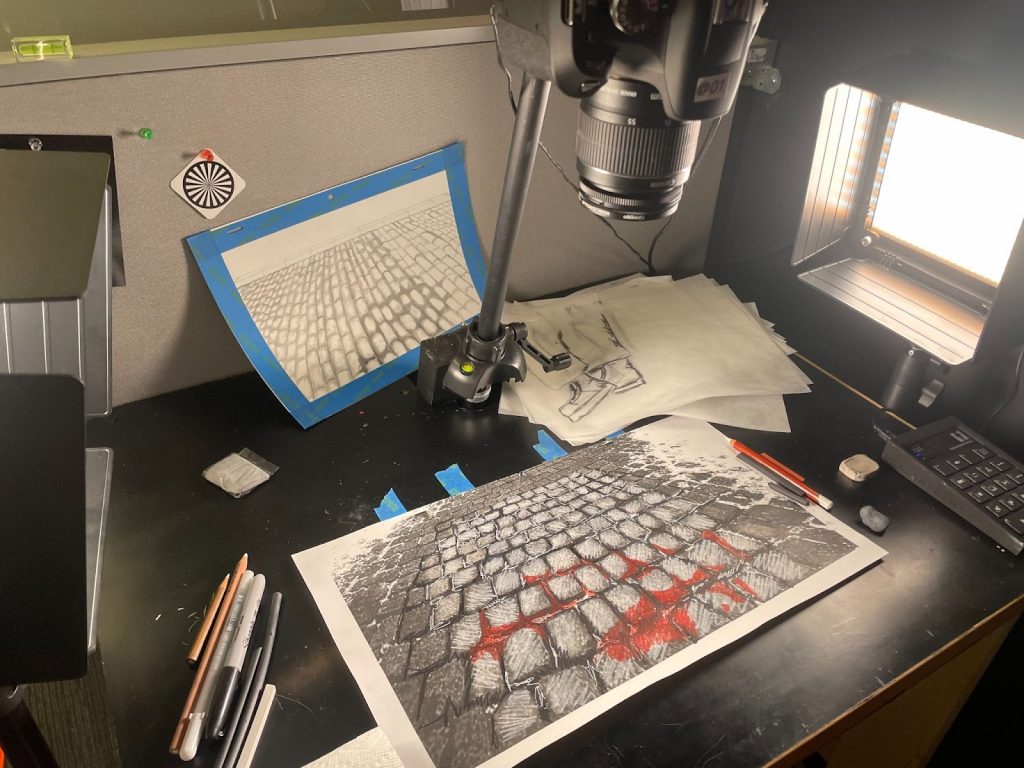By Anisha Chaudhary
Feb/3/2023
12 Participants
Planning:
During class on January 23rd, I volunteered to present a workshop on rotoscoping for our lab on February 3rd. With this limited time, I had to develop a simple idea that the lab members could participate and complete under 1 ½ hours. I spoke with Dr. Veras a few times and we decided on simple tools to use: filming equipment, Photoshop, After Effects, and a drawing tablet. For the reference footage, I found a film on my phone of a musical jewelry box from Neha’s China and Crystal, my family’s store. I wanted to have the lab members draw an object instead of a portrait since portraits can vary in style quite a bit. I took the 23 seconds of film and cut the time down to a 3-second loop. I then took the cut film and imported it into photoshop, converting the frames into 36 layers to split among 12 members. I labeled each consistently in accordance with sequence and then split them into 12 different photoshop files. I uploaded these files to Box to share with our members, along with an excel sheet to assign the files, and a short list of instructions on how to complete each file. The instructions went along the lines of, “keep drawings on a separate layer, use the assigned colors only, and do not draw the background”. I accompanied my presentation with a brief PowerPoint lecture so I could give detailed instructions on the process of importing, exporting, and organizing files for this type of animation.










What did I learn?
Students will not strictly follow directions and they will do their own thing for an assignment that is not graded. Looking at the final product, however, I think that this rebellion was beneficial to our final piece. Students should have fun in the lab, experimenting and trying new things. It is funny because one student’s submission that went totally against all the rules ended up adding a sense of humor, charm, and eye-catching quality to our animation. It highlighted the fact that this is student-made artwork, so you are combining many different personalities and skill levels into one output animation.
The organization was KEY to managing this project with multiple participants. I was able to export the file so easily once everyone submitted their section. However, even with organization, I need to keep my files accessible and not have too many folders or instructions. With such a short time to create, I must make my lecture brief and to the point so instruction is clear.
What am I going to do next?
Another workshop idea I have still falls under the method of rotoscoping. However, I would like to have it done individually with a focus on animating fluids – such as water dripping or bubbles. There is lots of freedom with animating water, and I think it is a wonderful way to study natural movements. I would incorporate texts and images from Joseph Gillard’s Elemental Magic because it was an eye-opening and influential reading in my own animation practice.
Notes for the future:
I should use a tripod to maintain stability because you can see the background jump when the dinosaur pops up with the original background. I think it would engage students more if they could film their own references, but because I was more focused on technique, I did the right thing by filming my own reference to use in the group project. If I do another group project, I should limit each member to drawing only two frames of animation so we can get it done during our lab. Overall, I genuinely think that the experimenta.l. lab members did a wonderful job, and I would call this workshop a success. I was able to show students a new technique, and we ended with a quirky animated loop.
Final result:




















 Countdown Opening Title by ASIFA Central
Countdown Opening Title by ASIFA Central Morning Coffee (2015) by Tracy Miller-Robbins
Morning Coffee (2015) by Tracy Miller-Robbins O!PLA Festival Opening 2022 by Polsk Animacja
O!PLA Festival Opening 2022 by Polsk Animacja Airborne (2021) by Andrej Jobczyk
Airborne (2021) by Andrej Jobczyk Breath (2019) by Aneta Siurnicka
Breath (2019) by Aneta Siurnicka Three Little Stories (2021) by Zuzanna Michalska
Three Little Stories (2021) by Zuzanna Michalska A Lasting Image (2022) by Kirstin Stevens Schmidt, Scott Huddleston, Ana Villarreal, and Christine Veras
A Lasting Image (2022) by Kirstin Stevens Schmidt, Scott Huddleston, Ana Villarreal, and Christine Veras Ukraine Commentary (2022) by Gary Schwartz
Ukraine Commentary (2022) by Gary Schwartz Pure – Virtual Agony (2021) by Olga Przytula
Pure – Virtual Agony (2021) by Olga Przytula Despera (2021) by Alicja Liss
Despera (2021) by Alicja Liss Distance (2021) by Katarzyna Orlowska
Distance (2021) by Katarzyna Orlowska Island Hopping (2021) by Michael Long
Island Hopping (2021) by Michael Long On Time (2021) by Zbigniew Czapla
On Time (2021) by Zbigniew Czapla I Dreamed Of (2021) by Piotr Tokarz.
I Dreamed Of (2021) by Piotr Tokarz. Elevator Alone (2021) by Anastasia Papadopoulou
Elevator Alone (2021) by Anastasia Papadopoulou Toddler Talks (2021) by Diana Reichenbach
Toddler Talks (2021) by Diana Reichenbach Ten Degrees of Strange (2021) by Lynn Tomlinson
Ten Degrees of Strange (2021) by Lynn Tomlinson An Ostrich Told Me the World is Fake and I Think I Believe It (2021) by Lachlan Pendragon
An Ostrich Told Me the World is Fake and I Think I Believe It (2021) by Lachlan Pendragon Beyond Noh (2020) by Patrick Smith
Beyond Noh (2020) by Patrick Smith















